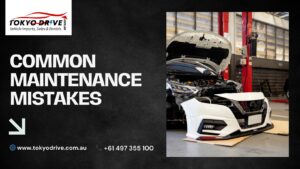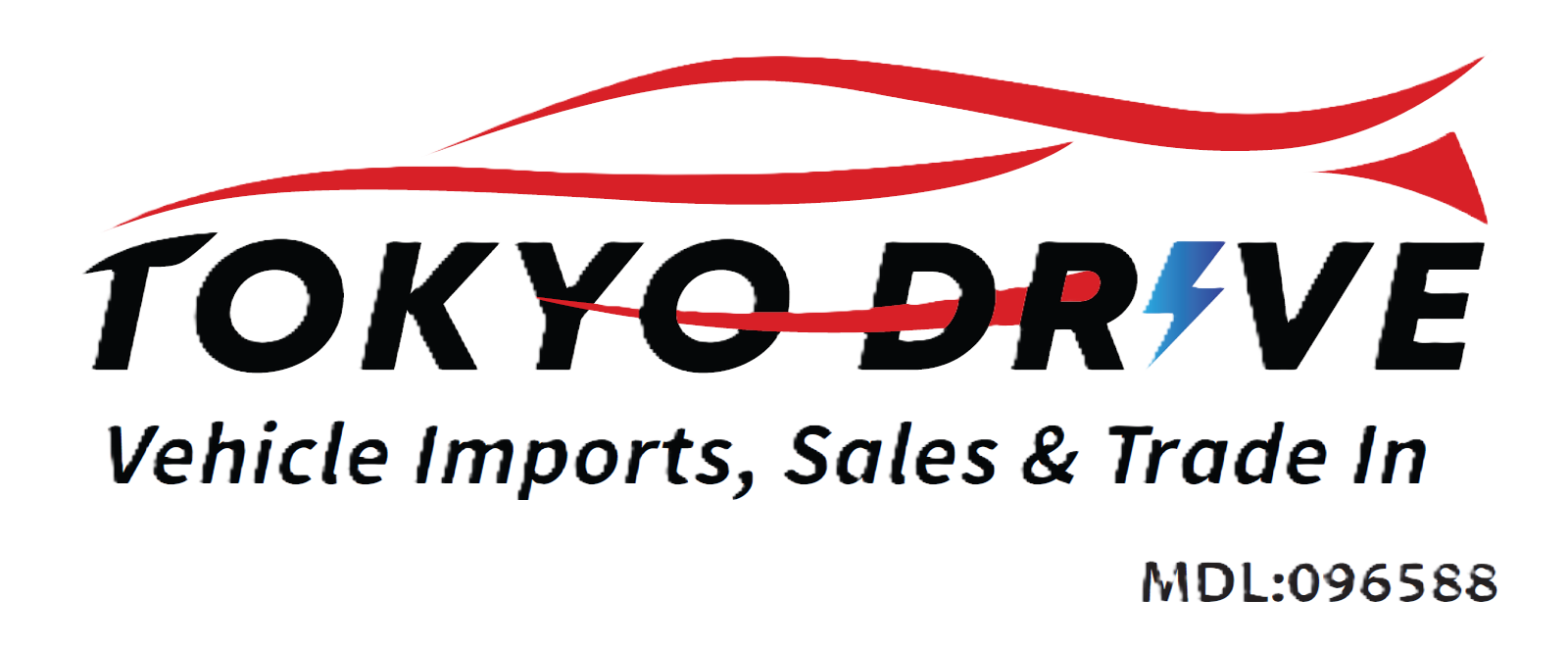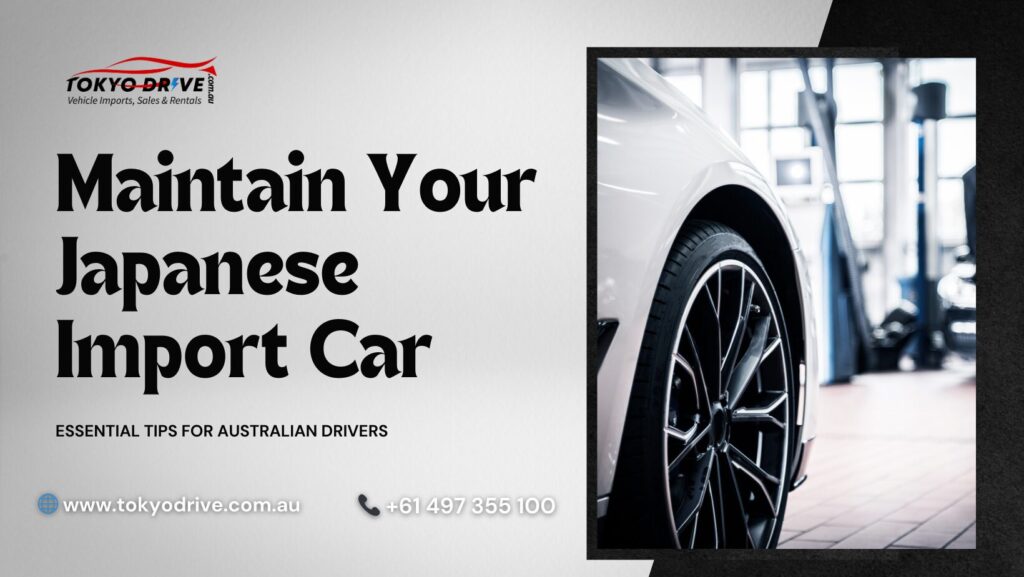Owning a Japanese import car in Australia is an exciting experience. These vehicles are known for their reliability, advanced technology, and fuel efficiency. However, maintaining them requires special attention, especially when it comes
to sourcing parts, servicing schedules, and local compliance. In this comprehensive guide, we’ll cover everything you need to know about keeping your imported Japanese car in top shape.
Why Proper Maintenance is Crucial for Japanese Import Cars

Japanese cars are built to last, but they still require regular maintenance to perform at their best. Here’s why proper upkeep is essential:
- Longevity – Regular servicing ensures your car remains roadworthy for years.
- Fuel Efficiency – Well-maintained vehicles consume less fuel and reduce emissions.
- Resale Value – A well-kept Japanese import car retains its value longer.
- Compliance with Australian Standards – Proper maintenance ensures your car meets Australian road regulations.
Understanding the Unique Needs of a Japanese Import Car
Unlike locally available models, Japanese import cars have specific maintenance requirements:
- Different Engine Specifications – Japanese domestic models often have different engine configurations from their Australian counterparts.
- Specialized Parts – Some components may not be readily available at local dealerships.
- JDM Technology – Certain features exclusive to Japanese models require expert servicing.
- Right-Hand Drive Adjustments – Some modifications may be necessary to ensure compliance with Australian standards.
Essential Maintenance Tips for Your Japanese Import Car
1. Regular Servicing and Oil Changes
- Change engine oil every 5,000 to 7,500 km, depending on the vehicle model and usage.
- Use high-quality synthetic oil to improve engine efficiency.
- Check and replace the oil filter during each oil change to prevent debris buildup.
2. Use High-Quality Fuel

- Japanese cars often have high-performance engines that require premium fuel.
- Using low-quality fuel can lead to engine knocking and reduced efficiency.
- Stick to 98-octane fuel for better performance and longevity.
3. Cooling System Maintenance
- Regularly check the radiator coolant levels to prevent overheating.
- Flush the cooling system every 40,000 to 50,000 km to remove dirt buildup.
- Ensure the thermostat and water pump are in good condition.
4. Transmission and Gearbox Care
- Check transmission fluid levels every 20,000 km.
- Use the manufacturer-recommended ATF or CVT fluid for smooth gear shifts.
- Get the transmission inspected by a specialist if you notice delayed shifting or gear slippage.
5. Brake System Inspection
- Inspect brake pads every 15,000 to 20,000 km.
- Ensure the brake fluid is topped up and replaced every two years.
- Watch for signs of worn-out brakes, such as squeaking noises or reduced stopping power.
6. Suspension and Steering Checks
- Inspect shock absorbers for leaks or damage every 30,000 km.
- Align and balance the wheels to prevent uneven tire wear.
- Check power steering fluid levels and ensure there are no leaks.
7. Battery Maintenance
- Japanese cars often have smaller battery sizes than Australian models.
- Check battery terminals for corrosion and clean them regularly.
- Replace the battery every 3-4 years for optimal performance.
8. Tire Maintenance and Rotation
- Check tire pressure monthly and inflate to the manufacturer’s recommended PSI.
- Rotate tires every 10,000 km to ensure even wear.
- Use high-quality tires suited for Australian road conditions.
9. Electrical System and Lights
- Japanese import cars may have unique electrical systems that require specialized care.
- Regularly check all exterior and interior lights for proper functioning.
- If your car has Xenon or LED headlights, ensure they meet Australian regulations.
10. Compliance with Australian Regulations
- If your car was recently imported, ensure all modifications meet ADR (Australian Design Rules).
- Convert the speedometer to kilometers per hour (km/h) if it is still in miles.
- Install a rear fog light if required by local regulations.
Where to Find Parts for Your Japanese Import Car in Australia
Sourcing parts for Japanese cars can be challenging, but here are some great options:
- Tokyo Drive (tokyodrive.com.au) – Specializes in Japanese car imports and parts.
- Japanese Auto Parts Suppliers – Shops like Japwreck and Just Jap stock OEM and aftermarket parts.
- Online Marketplaces – Websites like eBay and Gumtree have used and new Japanese car parts.
- Specialist Workshops – Many mechanics specialize in JDM car servicing and parts sourcing.
Common Mistakes to Avoid When Maintaining Your JDM Car
- Ignoring Service Schedules – Skipping maintenance can lead to expensive repairs.
- Using Low-Quality Parts – Always use OEM or high-quality aftermarket parts.
- Neglecting Fluids – Regularly check oil, coolant, and transmission fluids.
- Delaying Repairs – Address minor issues before they turn into major problems.
- Not Checking Import Compliance – Ensure your car meets Australian road laws.
Final Thoughts
Maintaining a Japanese import car in Australia is simple if you follow the right steps. Regular servicing, using high-quality parts, and ensuring compliance with local regulations will keep your JDM car running smoothly for years. Whether you own a Nissan Skyline, Toyota Supra, or Mazda RX-7, proper care will maximize your car’s performance and longevity. For expert guidance, servicing, and JDM car parts, visit Tokyo Drive at tokyodrive.com.au and keep your ride in peak condition.


